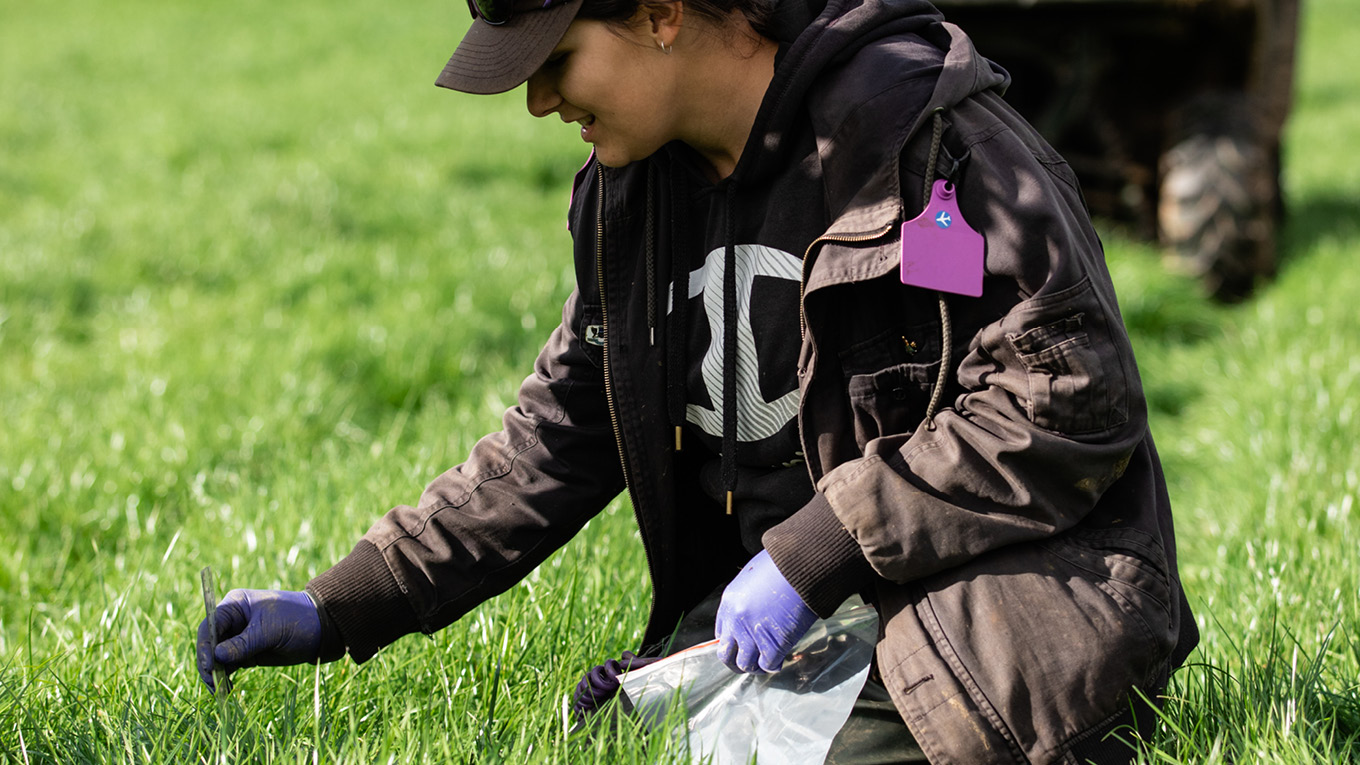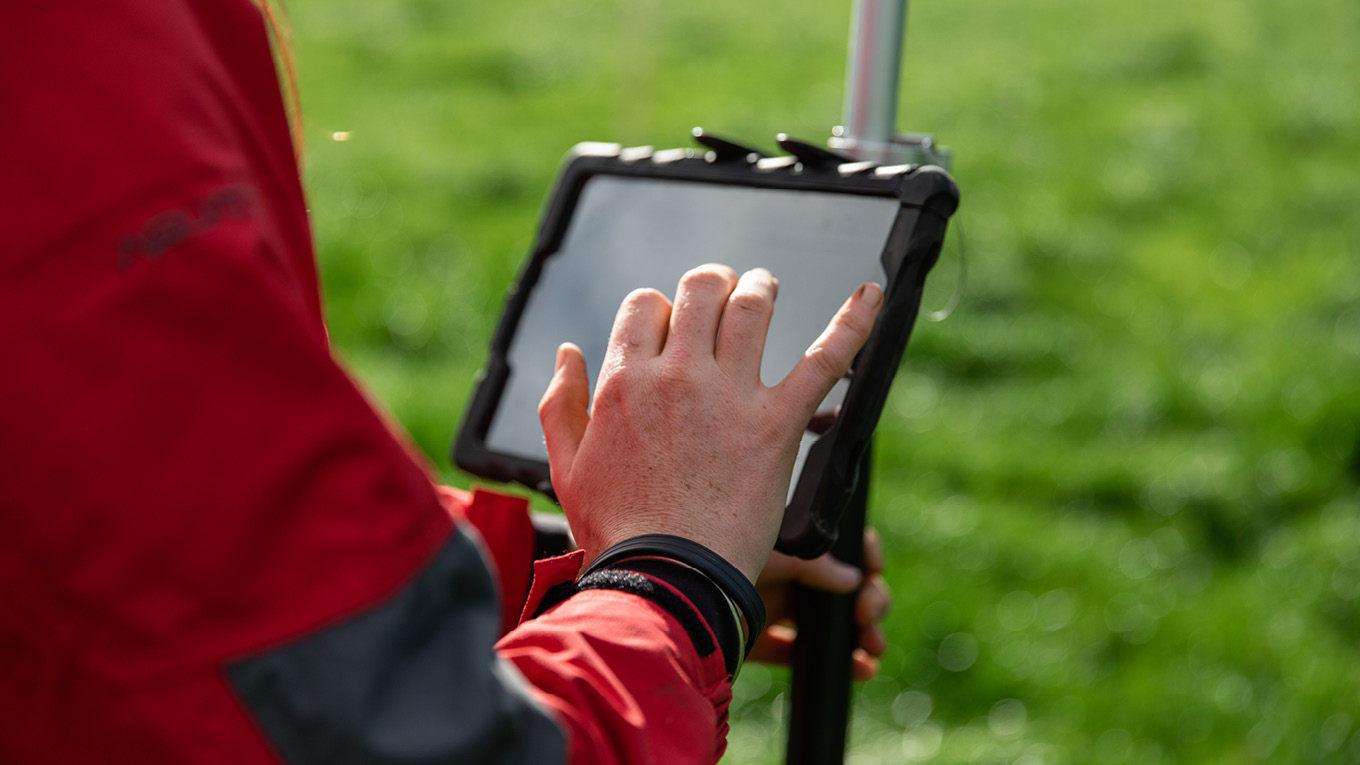Animal Technologies
Animal technologies are used for monitoring the reproductive activity, health, welfare status and feeding of dairy cows.
The development of animal-focused technologies began with individual cow identification and now includes sensors to measure characteristics of individual cows. These sensors have activity, weight changes and milk and rumen parameters that may assist in supporting the health, welfare and reproductive management of individual dairy cows. Many of the sensors available for monitoring the reproductive activity, health and welfare status and feeding of dairy cows are described in the EU Industry Innovations Report.
-
Cow identification
Electronic cow identification
Individual cow identification enables tracking of dairy cows and their associated herd and performance records.
More information
Precision Dairy Technology: Electronic Cow Identification (PDF, 235KB)
This fact sheet describes two types of cow identification that have two distinct purposes: the official National Livestock Identification System (NLIS) and the within-farm cow management identification system.
-
Heat detection activity meters
The majority of automated heat detection systems in Australia work by monitoring cow activity. These automated systems have been developed to detect increased activity either as steps or neck movements indicating a heat event.
More information
These fact sheets describe how the activity meter works and how dairy farmers can use the information generated by the technology.
Precision dairy technology: Heat detection activity meters (PDF, 1.2MB)
Contact details of the major suppliers, together with approximate cost and other relevant information.
Guide to Automated Heat Detection Technologies (PDF, 3.7MB)
Detailed information on various automated heat detection technologies currently available in Australia.
Case studies
These case studies describe how dairy farmers have implemented activity meters on-farm and their experiences with this technology. This information is presented as a short document and a video with the dairy farmer.
Mark Billing, Colac, Victoria
Craiglands Dairy is a family-owned partnership run by Mark Billing and his wife. They milk about 450 cows on a 280–hectare dryland milking platform west of Colac in Victoria.
Precision dairy technology: Heat detection activity meters: Case study: Mark Billing (PDF, 1.5MB)
AJohn van Adrichem, Togari, Tasmania
John and Caroline van Adrichem and their son Arjan milk about 255 cows with four robots on their 80–hectare dryland milking platform at Togari in Tasmania.
Precision dairy technology: Heat detection activity meters: Case study: John and Caroline van Adrichem (PDF, 1.4MB) -
Laboratory tests for pregnancy diagnosis in dairy cows
Reliable methods for detecting early pregnancy in dairy cows include rectal palpation, ultrasound examination and laboratory-based tests that target proteins or hormones that become elevated in blood and/or milk during pregnancy.
More information
Laboratory tests for pregnancy diagnosis in dairy cows (PDF, 1.5MB)
This fact sheet describes the commerically available laboratory tests for pregnancy diagnosis in dairy cows. Contact details of the major suppliers and the pros and cons of laboratory testing generally is included.Case studies
Case studies demonstrate how dairy farmers have used laboratory tests for diagnosing pregnancy in their cows and their experiences with the technology.
Greg Rogers, Katunga, Victoria
Greg Rogers milks 260 cows, mainly Friesians and a few Jerseys, at Katunga in northern Victoria.
Case Study: Greg Rogers: Laboratory tests for pregnancy diagnosis in dairy cows (PDF, 2MB)
Pam Malcolm, Invergordon, Victoria
Pam Malcolm has been running Paringa Holsteins at Invergordon in northern Victoria since 1982. She milks 200 cows in a split-calving system.
Case Study: Pam Malcolm: Laboratory tests for pregnancy diagnosis in dairy cows (PDF, 552KB)
-
Walkover weigh scale systems
Walkover weighing technology is commercially available in several Australian livestock industries including dairy. Walkover weigh scales are designed to sit in the exit race of a dairy and weigh cows as they leave the dairy after each milking.
More information
Precision dairy technology: Walkover weigh scale systems (PDF, 3.0MB)
This fact sheet describes how the walkover weigh scales work and how dairy farmers can use the information generated by the technology. It also includes contact details of the major suppliers and approximate costs.
Case studies
Case studies demonstrate how dairy farmers have implemented walkover weigh scales on-farm and their experiences with this technology. This information is presented as a short document and a video with the dairy farmer.
Mark Billing, Colac, Victoria
Craiglands Dairy is a family partnership owned by Mark Billing and his wife. They milk about 450 cows on 280–hectares dry land milking platform west of Colac in Victoria.
Precision dairy technology: Walkover weigh scale systems: Case study: Mark Billing (PDF, 1.9MB)
Downloads
-
EU Industry Innovations ReportPDF, 1.79 MB
-
Adoption of automatic gate timersPDF, 598.2 KB
-
Electronic cow identificationPDF, 252.97 KB
-
Precision dairy technology Heat detection activity metersPDF, 1.16 MB
-
Guide to Automated Heat Detection TechnologiesPDF, 3.74 MB
-
Heat detection activity meters case study Mark BillingPDF, 1.49 MB
-
Heat detection activity meters case study John and Caroline van AdrichemPDF, 1.38 MB
-
Laboratory tests for pregnancy diagnosis in dairy cowsPDF, 1.48 MB
-
Case Study Greg Rogers Laboratory test for pregnancy diagnosis in dairy cowsPDF, 1.57 MB
-
Case Study Pam Malcolm Laboratory test for pregnancy diagnosis in dairy cowsPDF, 551.53 KB
-
Precision dairy technology Walkover weigh scale systemsPDF, 3.01 MB
-
Precision dairy technology Walkover weigh scale systems case study Mark BillingPDF, 1.49 MB


